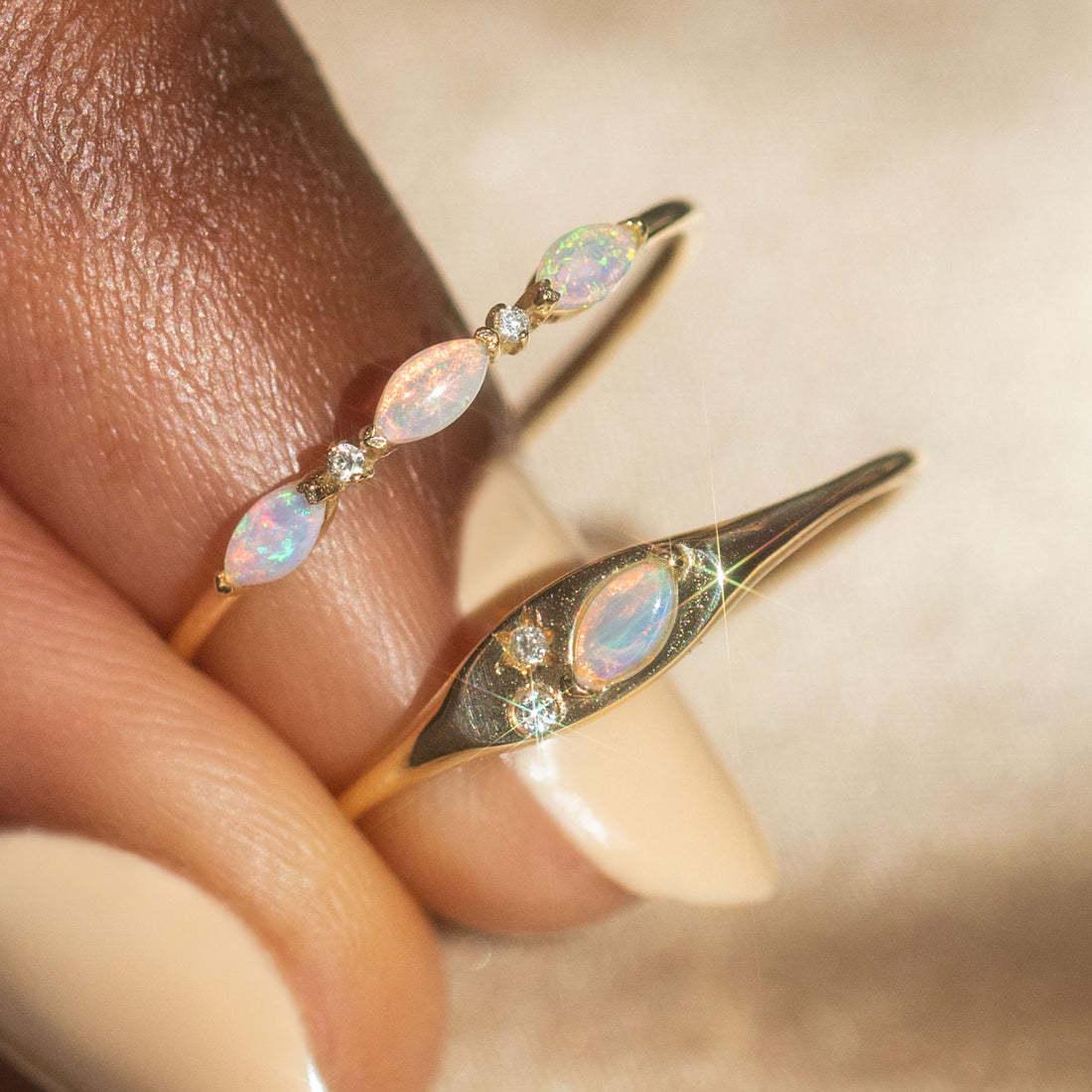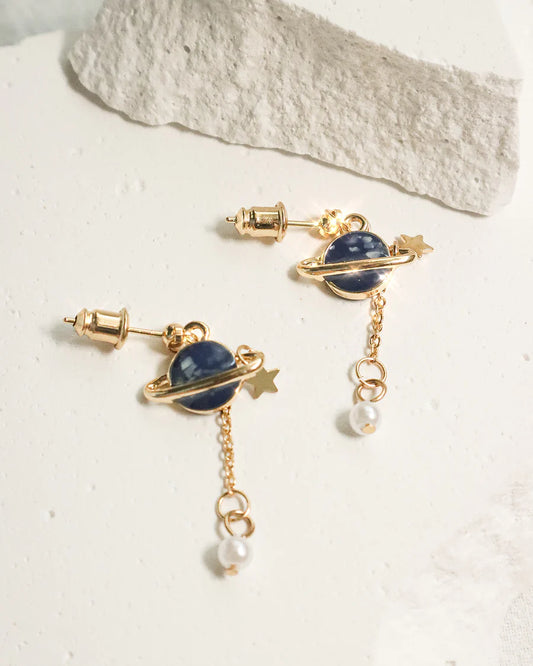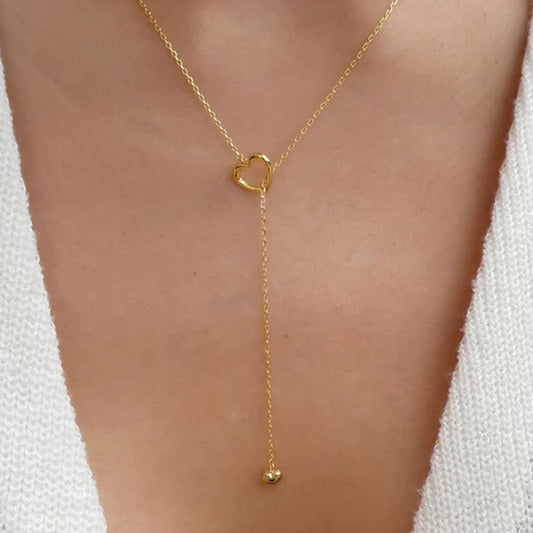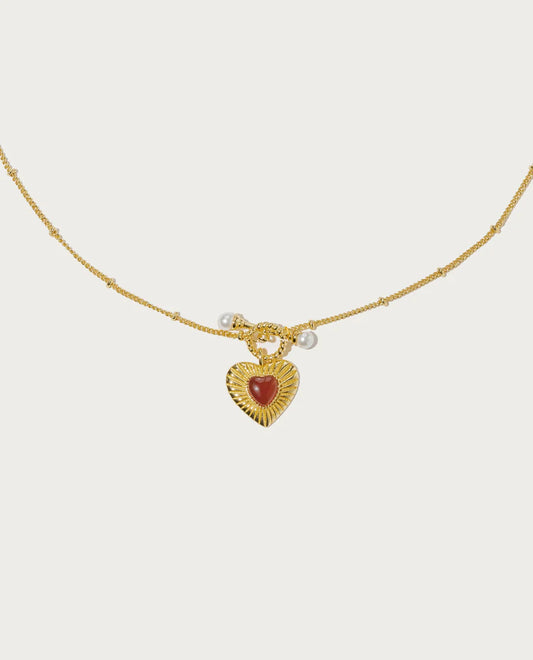Welcome to our comprehensive guide to birthstones! If you're looking to celebrate a special moment with a birthstone, check out our exclusive collection of birthstone jewelry, designed to cater to all tastes and occasions.
Whether you’re picking out a thoughtful gift or treating yourself to some meaningful jewelry, understanding the history and symbolism behind each month’s birthstone can add a personal touch to your choice. Here’s a detailed look at each birthstone by month, exploring their origins, historical significance, and what they represent.
January: Garnet
History: The garnet is a gem that has been used since the Bronze Age for both decorative and tool purposes. It was particularly popular in Ancient Rome.
Symbolism: Garnet is said to symbolize trust and eternal friendship. It is believed to bring peace, prosperity, and good health to the home.

Discover the warmth of Garnet with our Scarlet Drop Ring, perfect for giving the gift of friendship and trust.
Visual: A deep red or maroon gemstone, often used in rings and necklaces.
February: Amethyst
History: Amethyst was highly valued by the Ancient Egyptians and is frequently found among their artifacts.
Symbolism: Known for its beautiful violet color, amethyst represents sobriety, wisdom, and clarity of thought.

Enhance your wisdom with our elegant Birth Month Bracelet, a touch of sophistication for any occasion.
Visual: A purple quartz, popularly featured in both modern and traditional jewelry.
March: Aquamarine
History: Sailors once believed that aquamarine gemstones would calm waves and keep them safe at sea.
Symbolism: This light blue gemstone symbolizes serenity, clarity, and harmony.

Experience serenity with our serene Blue Sky Studs, ideal for achieving clarity and harmony in your daily life.
Visual: Often cut into an emerald shape to enhance its color.
April: Diamond
History: Diamonds were first mined in India over 4,000 years ago. Historically, they were reserved for royalty and used as a symbol of strength and courage.
Symbolism: As the hardest gemstone, diamonds represent invincibility and beauty.
Visual: Typically clear or colorless, and cut in various ways to enhance sparkle.
May: Emerald
History: Cleopatra was known to have a passion for emerald, and mummies in Egypt were often buried with an emerald carved with the symbol of verdure—flourishing greenness—on their necks.
Symbolism: Emeralds are associated with fertility, rebirth, and love.

Embrace love and rebirth with our vibrant Emerald Herringbone Bracelet, crafted to enrich your most cherished moments.
Visual: A rich green gemstone, often cut in a rectangular shape.
June: Pearl
History: Pearls have been used as adornment for millennia. They were one of the favorite gemstones of the Roman Empire and are highly valued in Asian cultures.
Symbolism: Pearls symbolize purity and innocence. They are often worn by brides.

Capture purity and innocence with our classic Crimson Sweetie Pearl Studs, perfect for weddings and special events.
Visual: Can vary in color from white to grey and even black, usually round in shape.
July: Ruby
History: In ancient Hindu culture, rubies were called "the king of precious stones" for their rarity, hardness, and beauty.
Symbolism: Rubies represent love, passion, and energy.

Feel the passion with our fiery Sunset Ruby Necklace, a bold symbol of love and energy.
Visual: A deep red gemstone, commonly cut into a cushion or oval shape.
August: Peridot
History: Peridot is found in volcanic ashes and was treasured by native Hawaiians as the tears of the goddess Pele.
Symbolism: The light green stone symbolizes strength and is thought to ward off nightmares.

Guard against nightmares with our light and airy Amour Hoops, a testament to strength.
Visual: Light green, often found in volcanic regions.
September: Sapphire
History: Sapphires have been prized as great gems since 800 BC. Rulers of ancient Persia believed the sky was painted blue by the reflection of sapphire stones.
Symbolism: This gem represents purity and wisdom.

Reflect wisdom and purity with our Falling For You Necklace, a piece as deep as the night sky.
Visual: Typically blue, though they can be found in a range of colors except red.
October: Opal
History: The name opal derives from the Greek word "opallios," meaning to see a change in color.
Symbolism: Opal symbolizes faithfulness and confidence.

Show your confidence with our mystical Orbit Ring, a spectrum of colors to brighten your day.
Visual: A gemstone famous for its ability to diffract light, showing many colors.
November: Topaz
History: Topaz was used by the Egyptians to ward off evil spirits and by the Romans to improve eyesight.
Symbolism: The gem is said to enhance strength and intellect.

Enhance your intellectual strength with our radiant Gentle Waves Ring, a subtle touch of elegance.
Visual: Typically yellow, but can be orange-yellow or even blue.
December: Turquoise
History: Turquoise has been prized as a gemstone for thousands of years, owing to its unique hue.
Symbolism: Known for bringing luck and success, turquoise is one of the oldest protection amulets.

Bring home success and luck with our protective Azure Blossom Bracelet, inspired by ancient amulets.
Visual: A bright blue to green mineral, often seen in the Southwestern U.S. jewelry.
By choosing a piece of jewelry with a birthstone, you not only offer a personal gift but also give a nod to the wearer's unique traits and history. Whether it's the protective power of turquoise or the wisdom associated with sapphires, each gem tells a story. Make your next jewelry purchase even more meaningful with these insights into the enchanting world of birthstones.
Explore our Birthstone Bracelets collection and find the perfect piece to celebrate life’s special moments. Each bracelet combines elegance with personal significance, making it an ideal gift for yourself or a loved one.










































